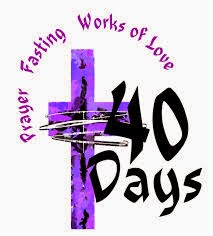by Bishop Arthur Walmsley March 25,
2015
Ava
DuVernay's film, Selma, is a powerful
portrayal of the movement by black citizens to transform the struggle to
confront racism in the law and public accommodations, one increasingly public
and in the face of violent resistance. Martin Luther King, Jr. was thrust on
the national stage during the organized boycott of buses in Montgomery,
Alabama, which began in 1955 when Rosa Parks refused to sit in the back of a
bus. The movement was vindicated a year later, when the Supreme Court condemned
segregation in public accommodations.
The
pressure for change continued to mount in the next years. One major event was
the March on Washington for Jobs and Freedom, held on August 28, 1963. It is
remembered annually for the "I have a dream" speech of Dr. King which
so powerfully captured the vision of a nation beyond segregation, one built on
insuring economic well-being for its citizens. Such an event would not have
happened without the sacrifices of the civil rights struggle.
Barely
two weeks after the march, on September 15, four young girls in a Sunday School
in Birmingham, Alabama, were killed by a bomb. The next year and a half was
punctuated by demonstrations, violent beatings of demonstrators, a growing
sense that the nation would not move short of action by the Congress. The movie
Selma captures both the continued
affront to the nation's well-being, but what one reviewer of the film
characterizes as the elusive "feeling and dynamic of a collective
movement." I was at home in our apartment in Brooklyn when the television
pictures of the bloodshed on the Pettus Bridge on March 7, 1965. I knew that I
would be on my way to Selma the next morning, and I sensed that Selma would be
a turning point.
After
receiving the blessing of John Hines, our Presiding Bishop, the next day I was
able to book a seat on an Eastern Airlines flight from Newark to Montgomery; by
hook or crook I would get to Selma from there. The flight originated in Boston,
and was substantially full of others on the same mission. I had a long and
thoughtful conversation with one of them, a Unitarian pastor named James Reeb.
Two nights later he would be bludgeoned to death - he had made the mistake of
eating in a restaurant in a white neighborhood.
The
attempted march had been held on Sunday. On Tuesday we lined up behind King and
the others planning the march, and left the cordoned-off area where we had been
secure behind national guardsman, and reached the approach to be bridge. King
stopped, we prayed, what seemed like an eternity we just stood. And then, led
by King, we knelt, turned and went back to the safe area. The stakes were high;
another assault on marchers would have been very bloody. I managed to find a
seat on a chartered airliner back to Washington, DC, and during the hiatus
prior to the march itself, I worked the phones and twisted arms to lobby
members of Congress to support the Voting Rights Bill which Congress would
ultimately pass.
The
stalemate which ensued gave time to pressure the White House to insure security
for a march, not easily achieved with the resistance of the Governor as well as
that of Jim Clark, the police chief of Selma. During this period, the numbers
of people in Selma kept changing, but morale remained high as the community
developed closer ties with local residents, as a good number had to be housed
in people's homes. One sign of how important a national event the Selma to
Montgomery March had become is the day on which a chartered planeload of church
leaders came, to celebrate the life of James Reeb and to encourage the
potential marchers.
An
agreement was finally achieved for troops to guard the march, and out of the
thousands who had gone to Selma, a representative group hiked the 54 miles to
Montgomery. On March 25, 1965 a huge throng surrounded the steps of the
capitol, signaling the success of the march. Its goal was now guaranteed: on
August 6, President Lyndon Johnson would sign the Voting Rights Act of 1965.
There
is another significant date in that month. On August 14th, Jonathan
Myrick Daniels, native of Keene, seminarian at the Episcopal Theological
School, a young man who chose to return to the South after the passage of the
bill to help enroll voters, was assassinated at the hands of a deputy sheriff
by a shotgun blast in Hayneville, Alabama. Most of us know his story. He is
listed in the liturgical calendar of saintly persons, St James' in Keene has
yearly commemorations of him, as do the dioceses in Alabama, a statue of him
has been placed in Westminster Abbey along with those of other twentieth
century martyrs. If you do not know his story, or even if you want to refresh
your memory, there is abundant material available through the internet and
elsewhere.
He,
it seems to me, epitomizes what it means to be called as a person of hope and
transformation. I doubt than any of us will face death as he did. But we do
need to read the signs of the times, and I do hope and pray that each of us
will play our part in facing the struggles we must confront.










